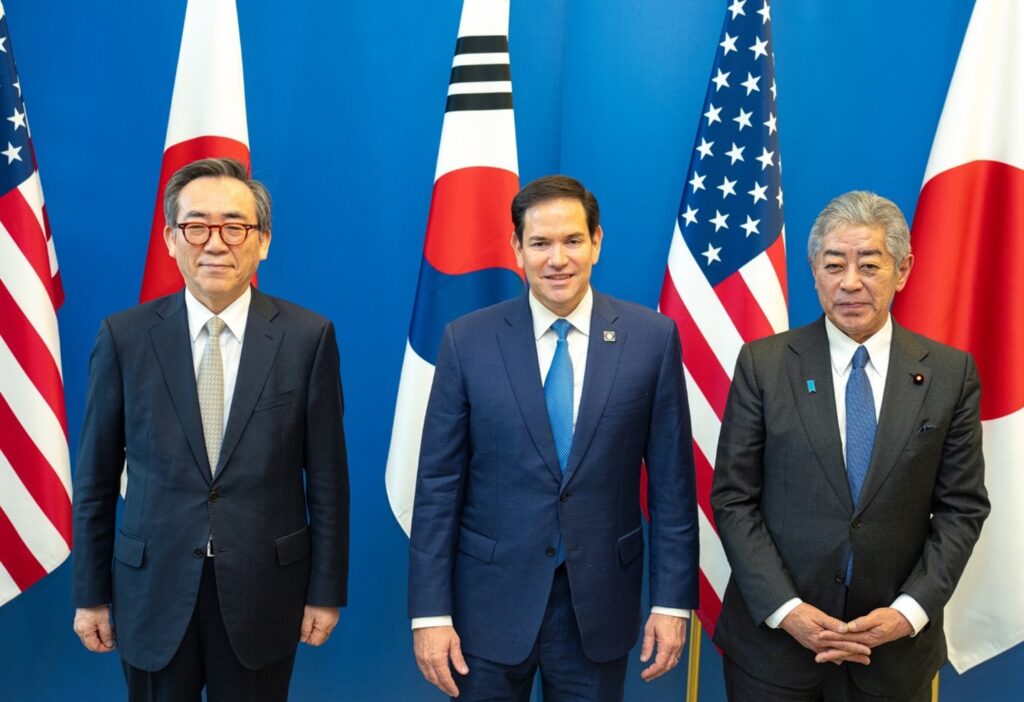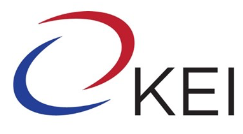The Peninsula
Q2 2025 U.S.-Korea Trade and Diplomacy Ledger
Published July 24, 2025
Author: Tom Ramage
Category: Economics, Economic Security, The United States

With capitals in both the United States and South Korea implementing policy changes and personnel choices that accompany new administrations, both countries continued down the path of engagement and shared attention to economic security, alliance cooperation, and bilateral cooperation in Q2 2025. The following is a timeline of high-level meetings and selected policy developments in the U.S.-South Korea relationship for Q2:
Timeline of Trade and Diplomacy for Q2 2025*:
June 24–25 Korean National Security Adviser Wi Sung-lac attends the 2025 NATO Summit in the Netherlands on behalf of President Lee Jae Myung. There, Wi meets with U.S. Secretary of State Marco Rubio and receives a request to increase the country’s military budget to 5 percent of GDP, matching new NATO commitments.
June 16–19 President Lee attends the Group of Seven (G7) summit in Kananaskis, Alberta, Canada. Along the sidelines, he meets with G7 leaders, including Japanese Prime Minister Shigeru Ishiba. He also signs the Kananaskis Wildfire Charter and the G7 Mineral Action Plan.
June 4 Lee Jae Myung is sworn in as president of South Korea.
June 3 Democratic Party candidate Lee is elected as president. Secretary Rubio subsequently issues a congratulatory press statement, citing “ironclad” commitments to the U.S.-South Korea alliance and continuing U.S.-South Korea-Japan trilateral cooperation.
May 31 At the Shangri-La Dialogue in Singapore, MND Deputy Minister for National Defense Policy Cho Chang-rae meets with a U.S. congressional delegation that includes Senators Tammy Duckworth (D-IL) and Pete Ricketts (R-NE) and Representatives John Moolenaar (R-MI), Brian Mast (R-FL), and Greg Stanton (R-AZ) to discuss security on the Korean Peninsula and the U.S.-South Korea alliance.
May 20 Former U.S. President Bill Clinton visits Gwanghwamun Square during a visit to Korea, which includes a reported meeting with MBK Partners Chairman Michael ByungJu Kim.
May 19–20 Minister of Korean Defense Acquisition Program Administration (DAPA) Seok Jong-gun visits Washington, DC, and meets with U.S. think tank experts and officials to discuss areas for cooperation on U.S.-Korea shipbuilding.
May 9–10 South Korea hosts the APEC Automotive Dialogue on Jeju Island on the sidelines of the APEC Second Senior Officials’ meeting.
May 1 Acting President Han Duck-soo resigns from office, leading to Choi Sang-mok assuming the roles of acting president, acting prime minister, and minister of economy and finance. Choi resigns in advance of impeachment proceedings introduced against him by the National Assembly. Minister of Education Lee Ju-ho becomes acting president.
April 30 As part of a trip to the region, U.S. Secretary of the Navy John Phelan visits Korea, meeting with Acting President Han and Chief of Naval Operations Admiral Yang Yong-mo. Phelan and Han agree to strengthen cooperation in the shipbuilding sector. Phelan also visits the shipyards of HD Hyundai Heavy Industries and Hanwha Ocean, including talks with HD Hyundai Vice Chairman Chung Ki-sun and Hanwha Group Vice Chairman Kim Dong-kwan to discuss maintenance, repair, and overhaul (MRO) and naval defense cooperation.
April 29–30 Following the invitation of Shinsegae Group Chairman Chung Yong-jin, Donald Trump Jr. visits Korea and meets with Hanwha Group Vice Chairman Kim, Hanwha Life Insurance President Kim Dong-won, and Hanwha Galleria Corp Vice President Kim Dong-seon to discuss energy, defense, shipbuilding, and semiconductor collaboration. He also meets with CJ Group Chairman Lee Jae-hyun, Naver Corp Founder Lee Hae-jin, KB Financial Group Chairman Yang Jong-hee, and Lotte Corp Senior Vice President Shin Yoo-yeol. Additional reported meetings include GS Energy President Heo Yong-soo, Celltrion Chairman Seo Jung-jin, Korean Air CEO Cho Won-tae, LS Group Chairman Gu Jae-eun, and MDM Group Chairman Mun Joo-hyun.
April 19–April 29 Bank of Korea Governor Rhee Chang-yong and Deputy Prime Minister and Minister of Economy and Finance Choi Sang-mok attend the Group of Twenty (G20) Finance Ministers and Central Bank Governors Meeting in Washington, DC. While attending, Rhee states that the inclusion of Korea’s exchange rate policy in what was then the July 8 trade package is a “positive aspect.” Minister Choi also attends two-plus-two trade consultations with U.S. Secretary of the Treasury Scott Bessent and U.S. Trade Representative Jamieson Greer alongside Minister of Trade, Industry and Energy Ahn Duk-geun on April 24.
April 18 Governor of Alaska Mike Dunleavy delivers video remarks at the AMCHAM Evolving Energy Forum in Seoul, calling for Korea to invest in the state’s liquified natural gas (LNG) pipeline.
April 12–19 The Congressional Study Group on Korea (CSGK), which includes representatives Ami Bera (D-CA), Andrea Salinas (D-OR), Ashley Hinson (R-IA), Jen Kiggans (R-VA), Salud Carbajal (D-CA), David Min (D-CA), and Tim Moore (R-NC), visits Korea on a trip led by the Association of Former Members of Congress (FMC). The delegation meets with Minister of Foreign Affairs Cho Tae-yul.
April 8 Acting President Han holds his first telephone conversation with U.S. President Donald Trump, marking the first leader-level communication between the United States and Korea since the National Assembly voted to impeach Yoon Suk Yeol in response to his declaration of martial law on December 3. In a social media post, President Trump remarks that the two countries are moving toward a tariff deal. National Economic Council Director Kevin Hassett also states that President Trump “prioritizes two of [the United States’] closest allies and trading partners, Japan and Korea.”
Han later clarifies in an interview with CNN that Korea will not retaliate against U.S. tariffs.
April 3 U.S. Secretary of State Rubio, Korean Foreign Minister Cho, and Japanese Foreign Minister Takeshi Iwaya hold three-way talks on the sidelines of the NATO foreign ministers meeting in Brussels. As part of the meeting, they release a trilateral joint statement covering regional security enhancement efforts, economic security cooperation, and continued commitment to trilateral engagement.
*Sourced from a review of Korean government press releases from the Ministry of Foreign Affairs (MOFA), the Ministry of Economy and Finance (MOEF), the Ministry of National Defense (MND), and media reports. Due to the ongoing nature of trade negotiations between the United States and Korea as of July 2025, KEI’s coverage of diplomacy and relevant policy developments via the Ministry of Trade, Industry and Energy (MOTIE) this quarter is covered in a separate U.S.-Korea Trade Negotiations Timeline.
Tom Ramage is Economic Policy Analyst at the Korea Economic Institute of America (KEI). The views expressed are the author’s alone.
Photo from U.S. Department of State Flickr.
KEI is registered under the FARA as an agent of the Korea Institute for International Economic Policy, a public corporation established by the government of the Republic of Korea. Additional information is available at the Department of Justice, Washington, D.C.
